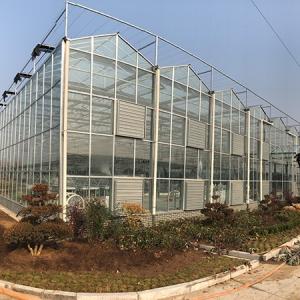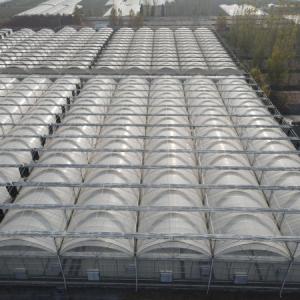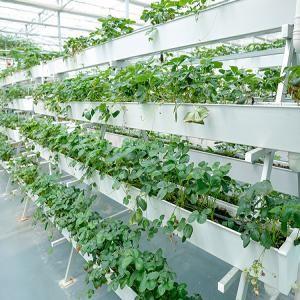Intelligent Greenhouses: Technological Innovation for Modern Agriculture
In the wave of transformation from traditional agriculture to modernization, intelligent greenhouses, with their core advantages of innovative structure, long service life and intelligent management, break through the constraints of natural environment on agricultural production. They empower agriculture with technology to create an optimal "spring-like" growing space for crops, becoming a core carrier of efficient cultivation.
1. Scientific Structure: Perfect Integration of Stability and Functionality
Intelligent greenhouses adopt a modular design of light steel frame + high-light-transmission covering materials, ensuring both structural strength and practical flexibility.
- Frame structure: The main frame is mainly made of hot-dip galvanized steel or aluminum alloy, featuring excellent wind pressure resistance and corrosion resistance. It can withstand level 10 strong winds and 30cm snow loads, with stability far exceeding that of traditional bamboo and wood structures.
- Covering materials: The roof is preferably made of PC sunshine board or glass, with light transmittance as high as over 90%, and equipped with UV protection and anti-condensation functions. Retractable thermal insulation curtains are installed around and on the top to achieve precise regulation of light and temperature.
- Expansion design: The modular assembly mode supports flexible expansion, meeting the diverse planting needs from small test fields to 1,000-mu planting bases.
2. Long Service Life: Dual Guarantee of Durability and Economy
The service life of intelligent greenhouses can reach 15-20 years, 2-3 times that of traditional greenhouses (5-8 years). The core advantage lies in the comprehensive upgrading of materials and processes.
- Corrosion and aging resistance: Steel is treated with hot-dip galvanizing to effectively avoid rust. Covering materials are added with special anti-aging coatings to delay UV damage, and the service life is extended by more than 30% compared with ordinary materials.
- Low maintenance cost: High-quality materials and stable structure reduce the frequency of daily maintenance, and the comprehensive investment cost is more economical in the long run.
3. Intelligent Management: Technological Empowerment of Precision and Efficiency
Relying on IoT, AI and other technologies, intelligent greenhouses realize full-process automated management, greatly reducing labor dependence.
- Intelligent environmental regulation: The sunshade system automatically opens and closes according to light intensity, and the thermal insulation curtain is linked with temperature sensors for adjustment, ensuring the maximum efficiency of crop photosynthesis.
- Precise supply of integrated water and fertilizer: The drip irrigation system delivers water and fertilizer according to preset programs, combined with real-time monitoring of soil EC/pH values to achieve on-demand supply, with water and fertilizer saving rates reaching 40%-60%.
- AI intelligent decision-making: The IoT platform integrates crop growth data, analyzes pest and disease risks and predicts yields through AI algorithms, and provides remote early warnings via mobile APP, significantly reducing the probability of human misjudgment.
4. Application Value: New Engine for Sustainable Agricultural Development
Intelligent greenhouses have been successfully applied in harsh environments such as plateaus, deserts and frigid zones, with multi-dimensional values:
- Dual improvement of yield and quality: The annual output of crops such as tomatoes and strawberries is 3-5 times higher than that of traditional planting, and the fruit taste and nutritional components are more stable.
- Energy conservation, environmental protection and cost reduction: Equipped with rainwater recycling systems and photovoltaic power generation devices, it reduces the consumption of traditional energy and water resources, and carbon emissions are reduced by more than 50%.





